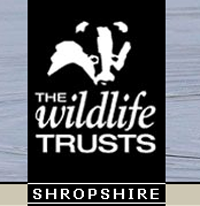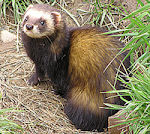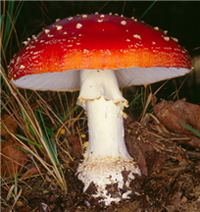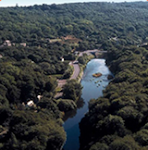Two reports one from Wales and one from Shropshire.
Wednesday 2nd July 2025, Cae Felyn
As I was unable to attend this outing I hand over to our flyman for this report.
This was one of our annual “away days” to the area around Llwyn-derw near Llanidloes in Montgomeryshire. We normally pack plenty of clothing suitable for inclement weather when visiting, but this year we were blessed with almost perfect weather. Temperatures in the low twenties and extensive sunshine.
Three members ventured west and were joined by our local member who lived next door to the site.
We were greeted on arrival by the offer of refreshments, but keen to crack on and investigate the area, an organic market garden and plant nursery plus an adjoining marshy field, we refused the offer.
The perfect start to the day was made when a specimen of our favourite micro-wasp, Callitula pyrrhogaster was spotted in a vacuum sample. With such an important objective achieved in short order, we pondered whether we should return home forthwith, flush with success. Of course, we stayed, and a good thing that was too. Read on to see why.
 |
| Photograph: David Williams |
We quickly headed off for some promising looking well stocked flower beds, making a literal bee line for plants most likely to harbour bees. We were not disappointed. As anticipated, flowers of Lamb’s Ear Stachys byzantia hosted several Wool Carder Bee Anthidium manicatum. The big males busily patrolled the stands of Lamb’s Ear for visiting females. Photos were obtained by our chief photographer, who today ended up being lumbered with responsibility for both photographic recording and suction sampling.
 |
| Photograph: David Williams |
Nearby a few Crucifer Shield bugs Eurydema oleracea were seen.
 |
| Photograph: David Williams |
Moving on around the flower beds, two other bees, noted and photographed at Canterbury Bells Campanula medium flowers, were the tiny Small Scissor Bee Chelostoma campanularum;
 |
| Photograph: David Williams |
And a male of a rather scarce species, Gold-tailed Melitta Mellita haemorrhoidalis.
 |
| Photograph: David Williams |
A couple of clearwing moth lures had been put out on arrival at the site. One of these soon attracted two splendid male Lunar Hornet Moth Sesia bembeciformis. The two moths were liberated onto a fence post and photographs were obtained.
 |
| Photograph: David Williams |
 |
| Photograph: David Williams |
Elsewhere, many flower heads hosted numerous mating soldier beetles Rhagonycha fulva.
 |
| Photograph: David Williams |
Meadow Grasshopper Grasshoppers Pseudochorthippus parallelus were heard stridulating.
 |
| Photograph: David Williams |
Moving into an adjoining marshy meadow, another grasshopper was heard and photographed – Common Green Grasshopper Omocestus viridulus.
 |
| Photograph: David Williams |
Many more insect species were recorded during the day, three that were photographed are the leaf beetle Chrysolina staphylaea;
 |
| Photograph: David Williams |
14-spot Ladybird Propylea quattuordecimpunctata;
 |
| Photograph: David Williams |
And the moth Udea lutealis.
 |
| Photograph: David Williams |
We finished the day with refreshments provided by our hosts, taking advantage of the luxury of shaded picnic benches, which were much appreciated after a long day in the sun.
Wednesday 9th July 2025, Fordhall Farm
It was another hot Wednesday for our visit to Fordhall Farm, a community owned organic farm in Market Drayton. We have visited this site a few times in recent years but there were still areas that we have not investigated.
And it was to one of these areas that we set out for, resolutely, from the car park once we were all assembled.
We did well initially, only losing one person who found a patch of habitat to their liking just after we set off.
The rest of us almost made it to the far side of the large pasture we were crossing to get to our target area when we were brought to a halt by a beetle.
The beetle was on a cow pat that was riddled with holes, a rare sight in these days of treatments administered to cattle to prevent parasites and disease.
Here is the beetle in question.
 |
| Photograph: Nigel Cane-Honeysett |
It was photographed in a tray rather than on its natural habitat as it was rather lively and kept finding hiding places in the pat to visit.
Manual intervention was required!!!
Having posed in the tray for the photograph it decided it had humoured us for long enough and flew away.
We believe the beetle was a species called Teuclestes fossor.
Cow dung excitement over we continued to the target area, a large earthwork. Our reward for getting there was a seat. The downside was that the seat was at the top of the earthworks.
Most of us “raced” up the steps to the seat, but for this net it was all too much and it needed to rest.
The remainder of the morning was spent exploring the vegetation on top of, around, and at the bottom of the mound, with the seat being a convenient gathering spot to check and discuss what we had found.
Here are some of the species that we were able to identify, and which were patient enough to hang around long enough to be photographed.
A Nursery Web Spider, Pisaura mirabilis, with its egg-sac.
 |
| Photograph: Nigel Cane-Honeysett |
A Violet Ground Beetle, Carabus violaceus.
 |
| Photograph: David Williams |
A nymph of a Bishop’s Mitre Shieldbug, Aelia acuminata.
 |
| Photograph: David Williams |
A female Field Grasshopper, Chorthippus brunneus, ovipositing.
 |
| Photograph: David Williams |
A 10-spot Ladybird, Adalia decempunctata.
 |
| Photograph: David Williams |
A Common Green Grasshopper, Omocestus viridulus.
 |
| Photograph: David Williams |
Of course we must never underestimate the craftmanship, patience, and occasional colourful language as the subject moves or the camera refuses to focus, of the photographers attempting to photograph them. These reports would not exist without their efforts.
I really like this time of year as we see the emergence of the new generation of Dock Bugs. These are incredible looking creatures with tiny bodies and huge antennae. I find it hard to believe that anyone would not be moved by their cuteness. And so it proved when I showed one to a member of the group who had not seen one before.
Unfortunately, it was not photographed but you can see an early instar nymph by following this link to the British Bugs website
Dock Bug.
An almost equally cute nymph of a Box Bug, Gonocerus acuteangulatus, was photographed.
 |
| Photograph: David Williams |
Lunch was taken at some picnic benches in the children’s play area.
After lunch we set off on another trek to reach a wet meadow and pool.
All the dry weather had dried the wet meadow out somewhat but there were still damp areas and at least one area where, if you parted the vegetation, water was on the surface.
Neighbouring the meadow was a pool. Examining a suction sample of the vegetation around the pool was a good excuse for a huddle.
An early observation in the meadow was a Red-legged Shieldbug, Pentatoma rufipes, also known as a Forest Bug.
 |
| Photograph: Nigel Cane-Honeysett |
As I walked around the meadow, I noticed that this or another Red-legged shieldbug had taken a fancy to my trouser leg. It stayed a few minutes before disappearing.
Other finds in this area were:
A larva of a Meadow Ladybird, Rhyzobius litura;
 |
| Photograph: David Williams |
A nymph of a Long-winged Conehead, Conocephalus fuscus;
 |
| Photograph: David Williams |
And a larva of a Vapourer moth, Orgyia antiqua.
 |
| Photograph: Nigel Cane-Honeysett |
Time was up and we made our way back to the café, where we were treated to drinks and cake. And were able to discuss the merits of cow dung from untreated cattle.
My thanks to our hosts for granting us permission to enjoy ourselves and for their excellent refreshments. My gratitude to the photographers for providing their excellent images for this report. And thank you Nigel for providing an excellent summary of away day in Wales.

















































































